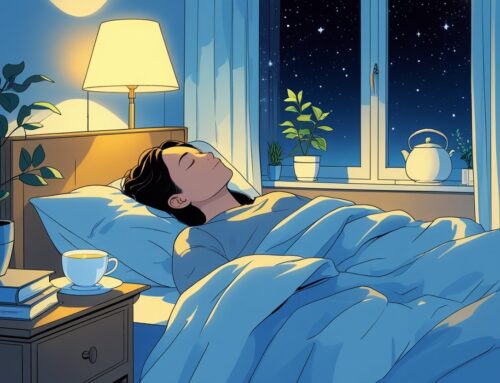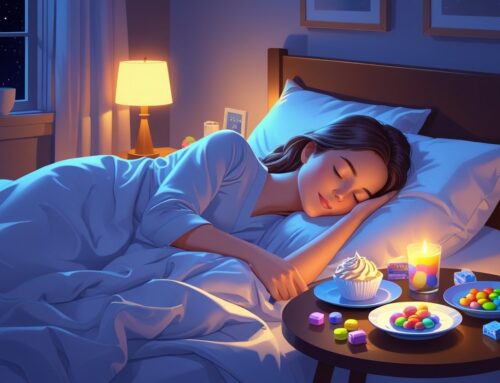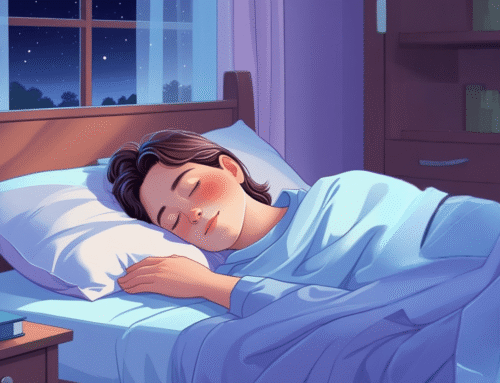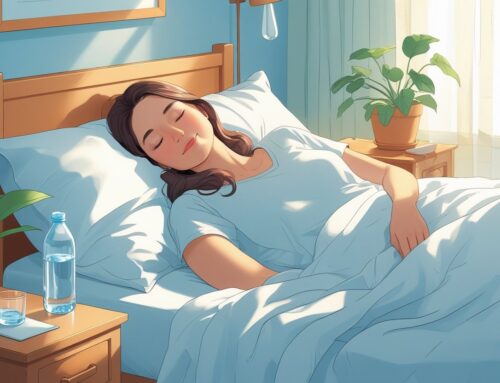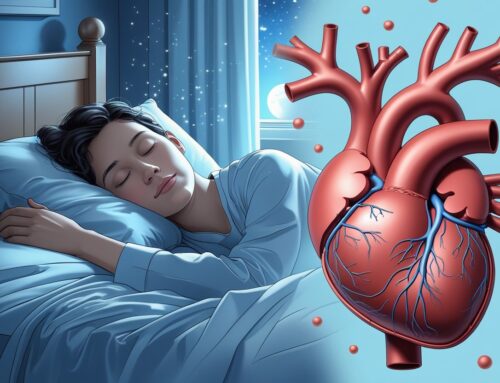Hip pain at night can make it tough to fall asleep or stay asleep. The way you position your body plays a big role in how much pressure your hips feel. Lying on your back with a pillow under your knees helps keep the hips and spine in line, according to the Cleveland Clinic.
If you prefer sleeping on your side, putting a pillow between your legs stops the knees from pressing together and keeps the hips level. Stomach sleeping usually makes hip and back pain worse, so it’s best to avoid it.
Support also matters. A mattress that’s too firm can press on sore hips, while one that’s too soft may let your body sink unevenly. A medium or medium-firm mattress is often most comfortable for reducing pain, though the right choice depends on your body type. Adding extra pillows to support your body can make side sleeping easier and reduce the need to shift around during the night.
Simple bedtime habits can also help. Gentle stretching before bed loosens tight muscles, and using heat or ice can ease soreness. If hip pain keeps waking you up, try adjusting your sleep position, supporting your hips with pillows, and checking whether your mattress gives the right balance of softness and support. Small changes like these often mean less pain and better rest.
Key Takeaways
- Proper sleep position reduces hip pain at night.
- Pillows keep hips aligned and relieve pressure.
- Mattress support and sleep habits influence hip comfort.
- A medium firm and contouring mattress that matches your preferred sleep position, such as side sleeping with a pillow between your knees, keeps hips aligned and reduces pain for more restful sleep.
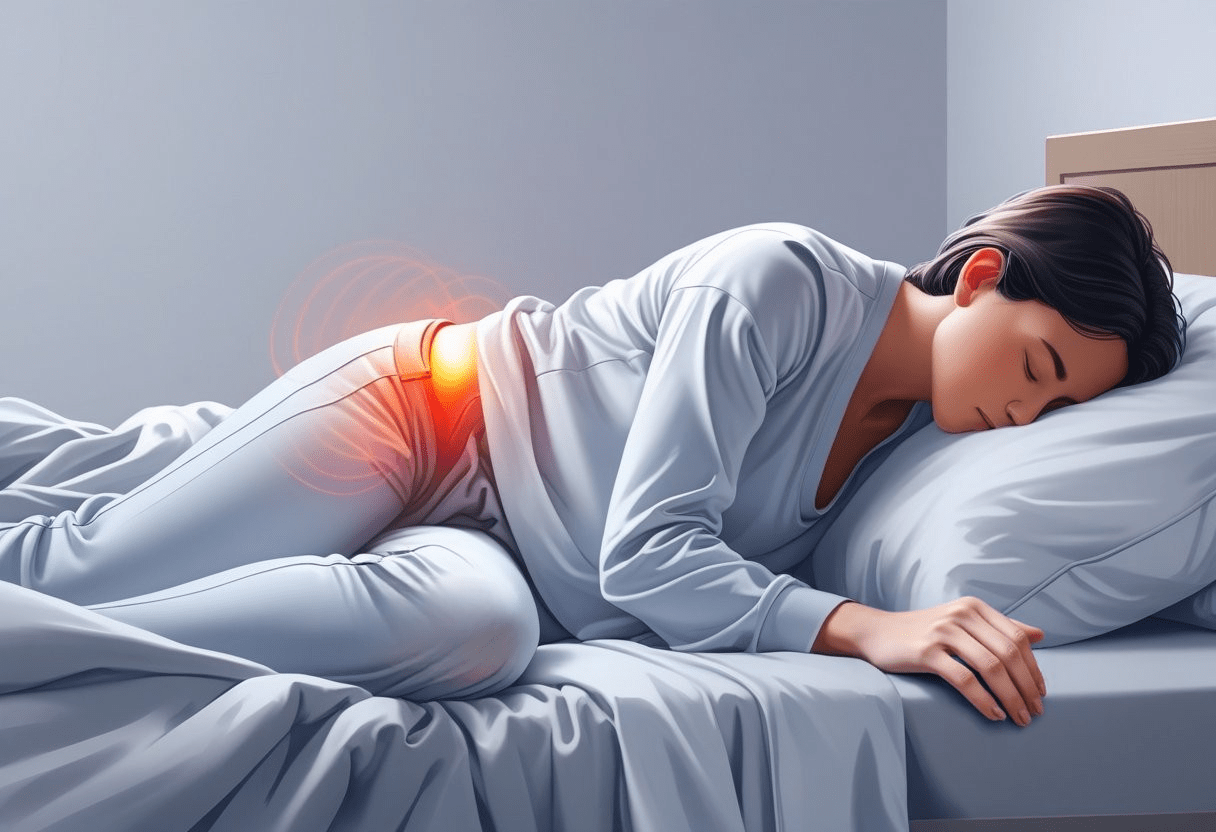
Understanding Hip Pain at Night
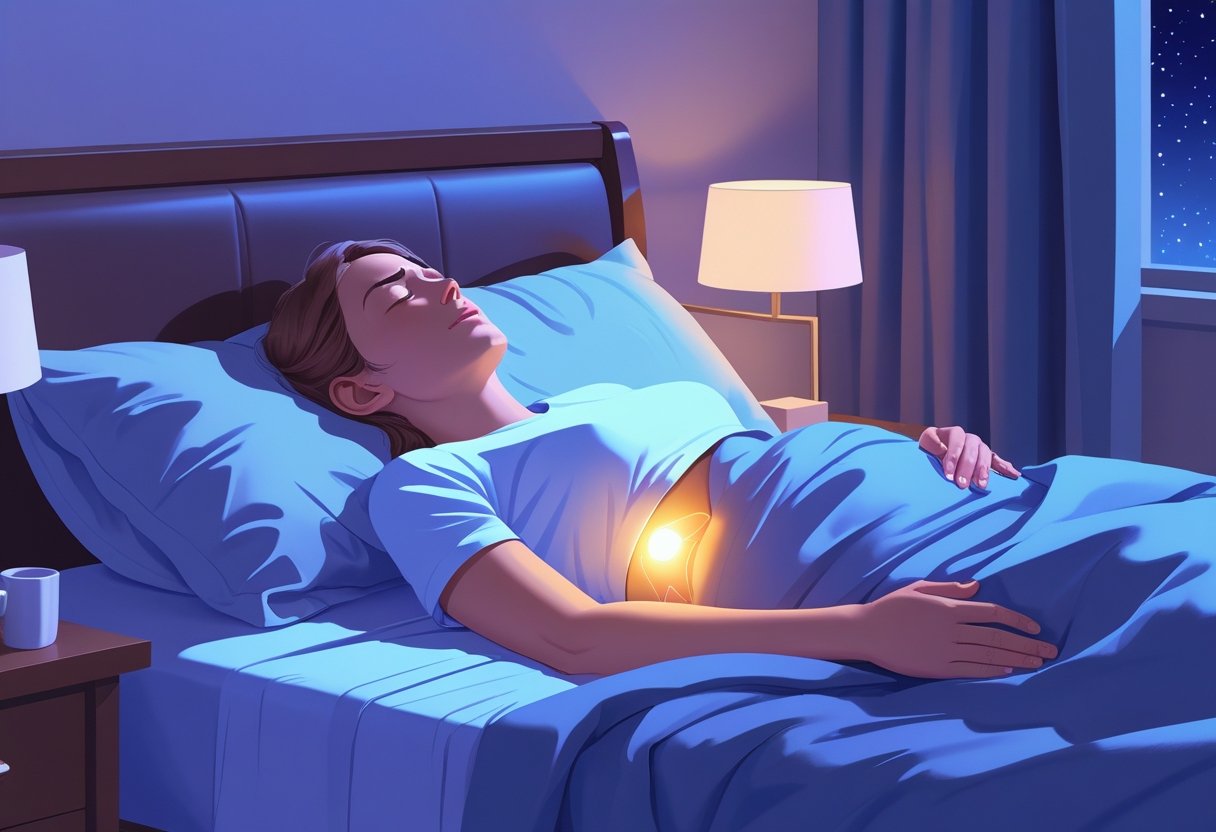
Hip pain at night can arise from several causes, disrupting a person’s sleep quality. It is often caused by pressure on the hip joint or inflamed tissues. Pain during sleep disrupts rest and can lead to tiredness and discomfort the following day.
Common Causes of Hip Pain While Sleeping
Hip pain at night usually comes from joint or muscle problems like arthritis, bursitis, or tendon irritation. Arthritis makes the joint stiff and achy, especially after rest. Bursitis happens when the small fluid sacs around the hip swell, causing sharp pain on the outer hip. Muscle strains or injuries can also flare up at night because lying still puts extra pressure on the hip.
Even your mattress can play a role. If it’s too firm, uneven, or sagging, it can push your hip into uncomfortable angles. How you sleep matters too. Lying on one side for hours can press right into the joint, and some positions cut off circulation or pinch nerves, making things worse. Small changes can help like putting a pillow between or under your knees for support, or switching to a mattress that eases pressure on your hips.
Finding the root cause and adjusting your sleep setup can make a big difference in how much pain you feel at night.
How Hip Pain Affects Sleep Quality
Hip pain at night causes frequent awakenings and difficulty falling asleep. Pain forces constant tossing and turning, so it prevents deep, restorative sleep. This leaves a person feeling fatigued during the day and lowers overall energy. Poor sleep quality limits the body’s ability to heal and manage inflammation. Over time, persistent hip pain creates a cycle in which pain interrupts sleep, and lack of sleep intensifies pain.
Simple changes like placing pillows for support or adjusting sleep positions help reduce pain and improve rest. Sleeping on one side with a pillow between the legs keeps the hips aligned and reduces pressure. Some people find relief by lying on the back with knees bent, which helps ease hip pain.
Best Sleep Positions for Hip Pain Relief
Choosing the right position eases pressure on the hips and improves rest. Proper support and alignment are key for reducing pain. Some positions keep the hips stable, while others cause added stress.
Side Sleeping: Dos and Don’ts
Side sleeping is the best position for hip pain since it keeps the hips aligned, especially if a pillow rests between the knees. This prevents the top leg from pulling the spine out of alignment. Sleeping on the less painful side, if possible, reduces discomfort. Avoid curling too tightly into a fetal position, as this increases pressure on the hips.
A firm mattress and a supportive pillow under the head keep the spine neutral and hips balanced. Switching sides during the night relieves strain on one hip.
Sleeping on Your Back
Sleeping on the back reduces uneven pressure on the hips by spreading weight evenly. A pillow under the knees helps maintain alignment of the hips and lower back, easing tension. A medium-firm mattress gives the best support in this position. Although back sleeping may not suit everyone with hip pain, it avoids twisting the hips and minimizes pressure points.
Back sleepers should ensure their hips do not sink too deeply into the mattress. Proper alignment prevents pain from worsening overnight.
Avoiding Stomach Sleeping
Stomach sleeping generally proves the worst position for relieving hip pain. It twists the hips and spine, placing extra stress on the joints. This position often rotates the hips forward, which increases discomfort. If someone must sleep on their stomach, a thin pillow under the pelvis helps reduce hip strain. However, switching to side or back sleeping remains the best way to ease hip pain overnight.
Avoiding stomach sleeping supports better hip alignment and protects against waking with stiffness or pain. It lets the hips and spine rest in a neutral position.
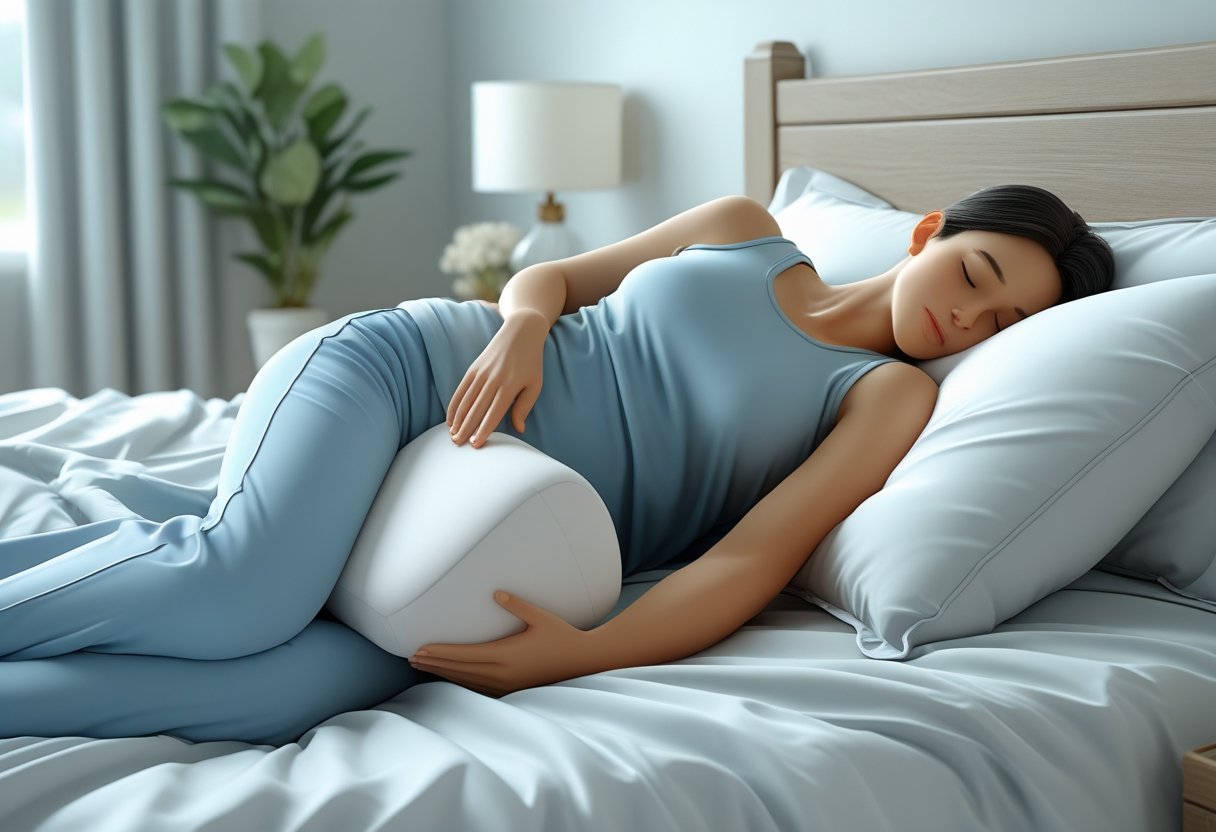
How to Relieve Hip Pain While Sleeping
Relieving hip pain during sleep depends largely on how the body receives support and stays aligned. Adjusting the sleep setup reduces pressure on the hips and increases comfort for people who lie on their side or back.
Proper Pillow Placement
Using pillows correctly keeps the hips, pelvis, and spine aligned. For side sleepers, placing a firm pillow between the knees stops the top leg from pulling the hip out of position. This reduces strain on the hip joint and nearby muscles. Those who sleep on their back can place a pillow under the knees to keep them slightly bent. This position takes pressure off the hips by shifting weight away from the joint, while also helping ease tension in the lower back.
Choosing a pillow with the right thickness and firmness matters. Thin or soft pillows fail to keep joints aligned, while thick or overly firm pillows cause discomfort. Trying different pillow types helps find the best balance for hip support.
Mattress Selection for Hip Support
A supportive mattress plays a key role in reducing hip pain during rest. Medium-firm mattresses often work well, since they cushion pressure points yet stay firm enough to align the hips with the rest of the body.
Memory foam mattresses contour to the body’s shape, relieving pressure on the hips. They should not be overly soft, though, or the hips may sink too far, which leads to misalignment. Innerspring mattresses with a firm top layer also provide good support while offering a bit of cushioning. Adding a mattress topper made of natural latex or memory foam can improve support on a too-soft mattress without requiring a full replacement.
Adjusting the mattress choice or adding layers helps relieve hip pain and improves sleep quality over time.
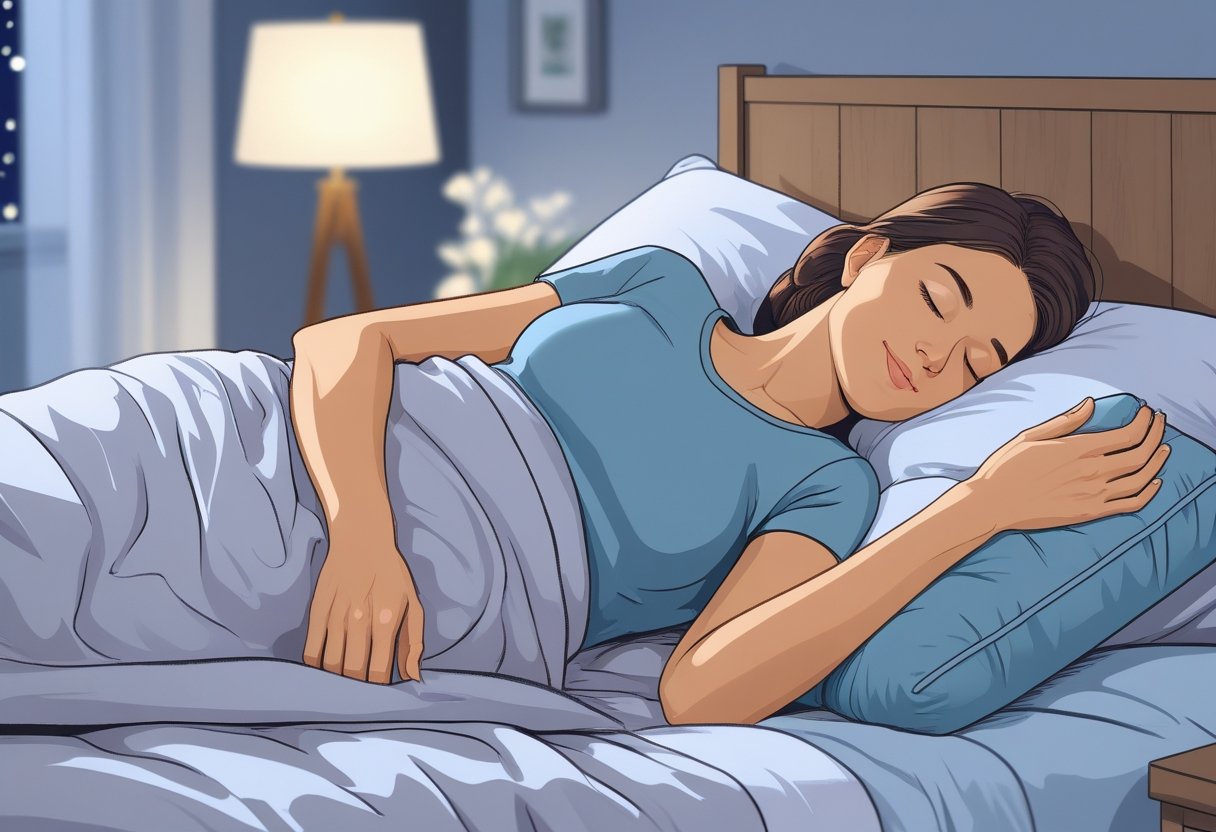
Lifestyle Adjustments for Nighttime Hip Pain
Managing hip pain during sleep becomes easier with a few daily adjustments. These include gentle movements before bed and maintaining a healthy weight, both of which reduce stress on the hips and allow more comfortable sleep.
Stretching and Exercise Before Bed
Light stretches or gentle exercises before bed ease hip pain. Focus on moves that open the hips and improve flexibility, such as hip rotations, leg stretches, and gentle lunges. Stretching relaxes tight muscles and relieves pressure on the hip joint, so it becomes easier to find a comfortable sleeping position. It also lowers the chance of waking up due to discomfort during the night.
Avoid high-impact exercises right before bed, and choose calming activities like yoga or slow walking instead. A routine lasting 10 to 15 minutes usually improves comfort at night.
Weight Management and Activity
Extra weight places more stress on the hips, which worsens pain, especially while lying down. Losing weight reduces this load and can ease pain during sleep. Regular low-impact activities like swimming or cycling build strength in muscles surrounding the hips without causing additional pain. This added support helps keep the hips stable overnight.
Staying active also improves overall health and sleep quality. However, intense exercise late in the day disrupts sleep, so aim to complete workouts earlier.
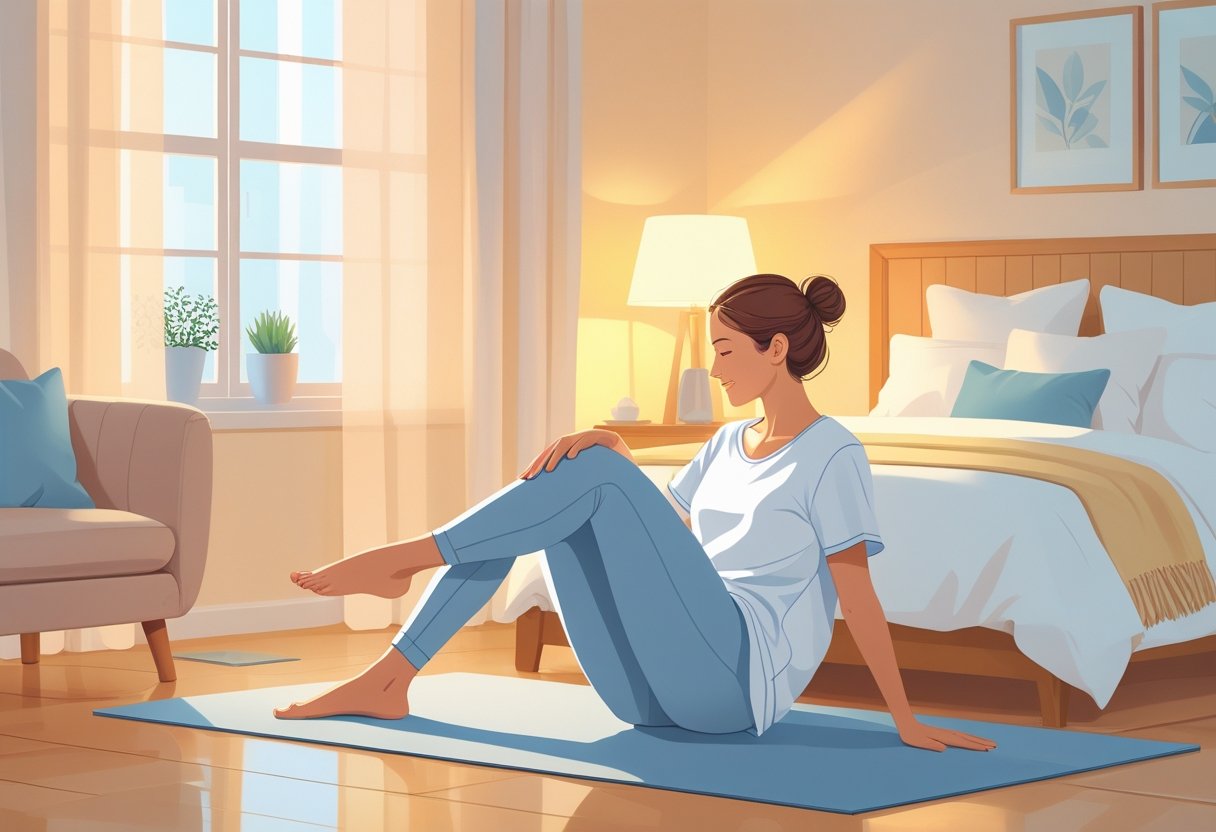
When to Seek Professional Help
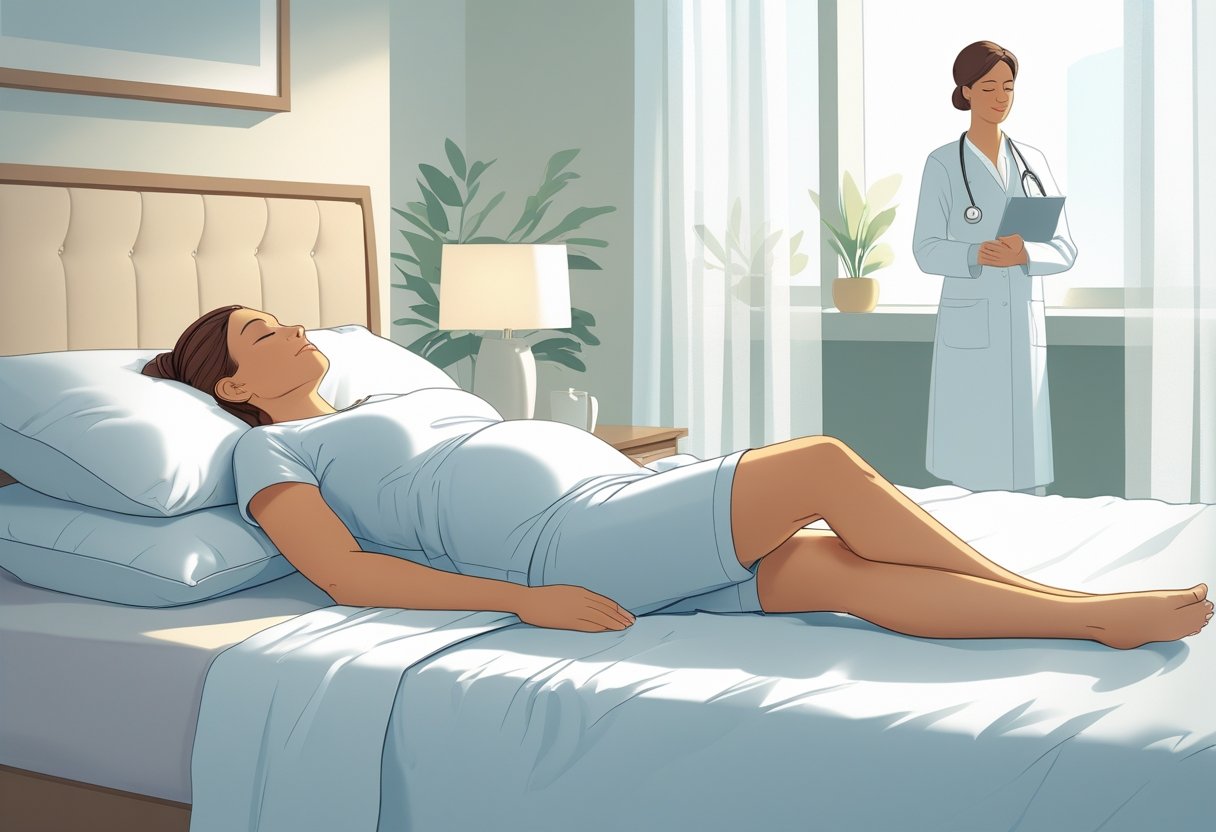
Hip pain during sleep can sometimes signal a problem needing medical attention. Knowing when to seek help is crucial to avoid serious complications or long-term discomfort.
Recognizing Persistent or Worsening Symptoms
If hip pain lasts more than a few weeks even after trying home remedies, it may point to an underlying issue. Pain that worsens at night, causes numbness or weakness in the leg, or restricts movement should not be overlooked. Other signs include swelling, redness, or fever near the hip joint. Experiencing sudden sharp pain or struggling to put weight on the leg also warrants prompt care.
Tracking symptoms closely helps determine whether professional evaluation is necessary. Persistent or worsening pain often shows that rest alone does not suffice.
Consulting a Doctor
A doctor can identify the cause of hip pain through a physical exam and imaging tests if required. They might recommend treatments such as physical therapy, medications, or injections. Providing a thorough history of the pain, sleep positions attempted, and any activities that aggravate or ease symptoms helps the provider develop an effective plan.
If initial treatments do not work, a referral to a specialist like an orthopedist or pain management expert may be needed. Getting help early can prevent complications and improve sleep quality.
Aligning Mattress Support with Sleep Posture to Ease Hip Pain
The right mattress is essential in reducing hip pain during sleep. It must provide enough support to keep the spine and hips properly aligned. A mattress that feels too firm or too soft causes the hips to sink or twist.
Hybrid mattresses receive recommendations because they contour to the body’s shape and promote proper spinal alignment. This feature helps relieve pressure on the hips and encourages proper posture. Adjustable mattresses can also increase comfort by letting users change the angle of the sleeping surface.
Look for these features when choosing a mattress:
- Medium firmness: Supports the body without creating pressure points
- Good contouring: Adapts to the curves of the hips and spine
- Durability: Maintains support over time
Matching the mattress to the preferred sleep position remains important. Side sleepers gain from a mattress that cushions the hip and shoulder to avoid pressure. Back sleepers require a mattress that supports the natural curve of the lower back and hips. Placing a pillow between the knees while sleeping on the side improves alignment further. This technique prevents the hips from rotating, which lowers muscle tension and pain.
For those who want a mattress that balances support and contouring, the Amerisleep AS3 Hybrid Mattress provides medium firmness alongside excellent pressure relief. Its hybrid design suits side and back sleepers, which is great for hip comfort.
The Amerisleep AS3 Hybrid Mattress combines advanced memory foam with individually wrapped coils to provide both cushioning and responsive support. Its breathable construction helps regulate temperature, which can improve overall sleep quality. Many people commend its ability to relieve pressure without feeling too soft or too firm, well suited for those with hip pain.
People experiencing persistent hip pain benefit from consulting a healthcare professional for personalized advice on mattress types and sleep posture.
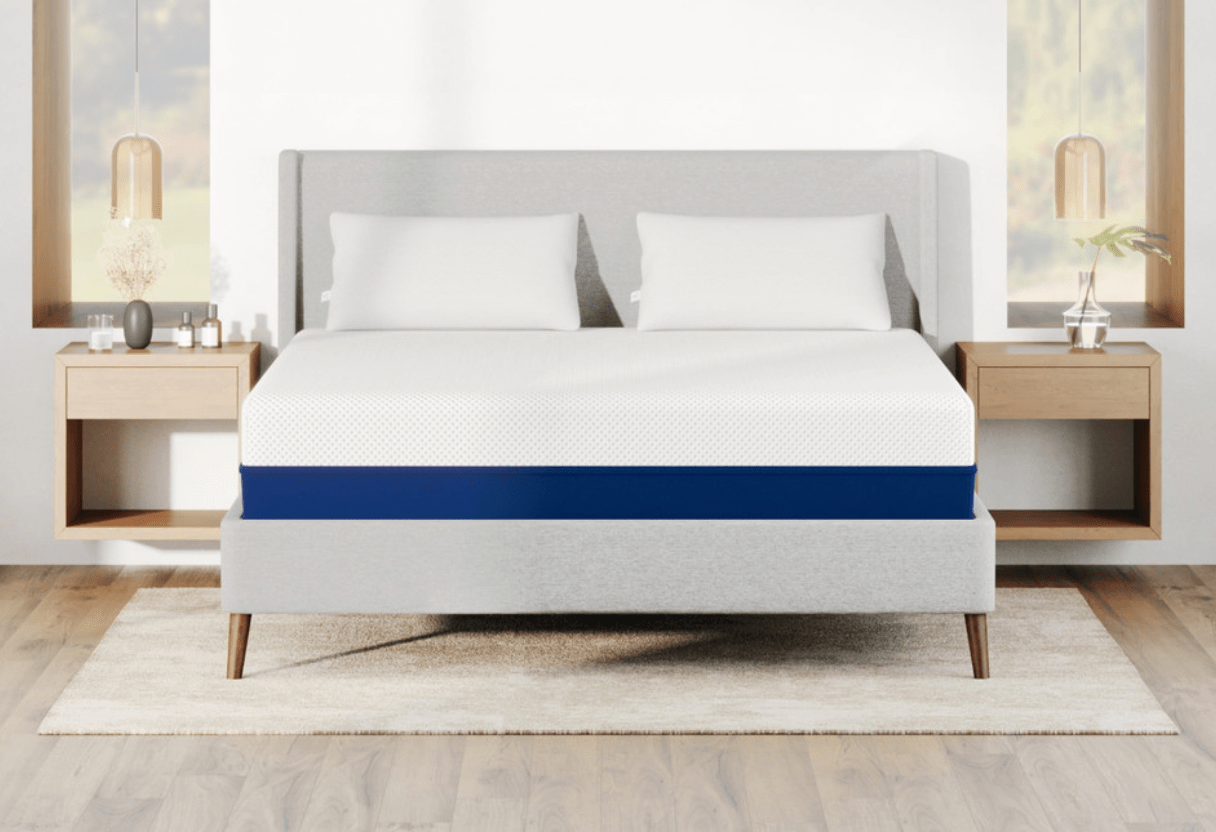
Frequently Asked Questions
Hip pain during sleep eases by changing positions and using pillows for support. Adjusting posture both in bed and during daily activities helps maintain proper alignment and reduce discomfort.

